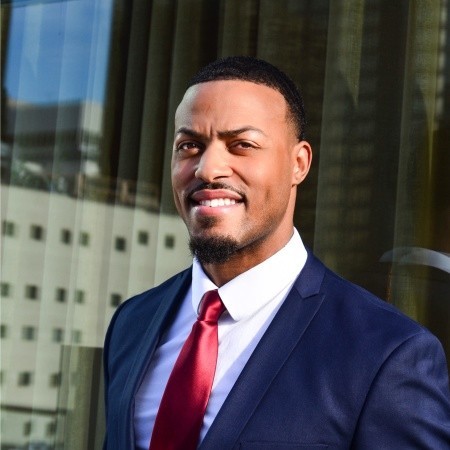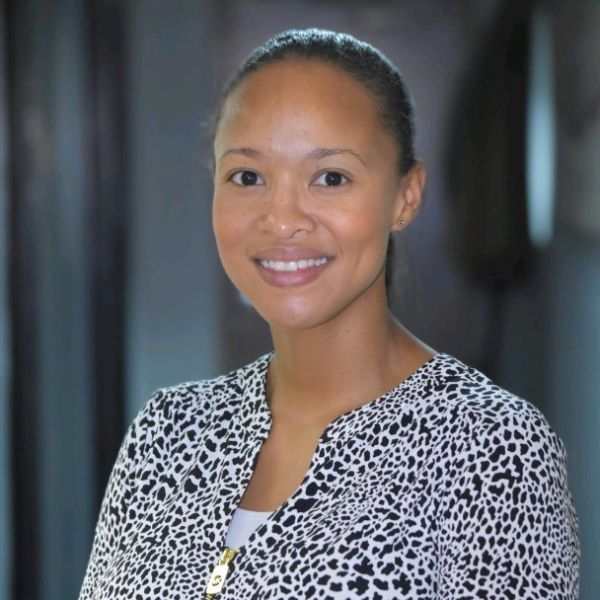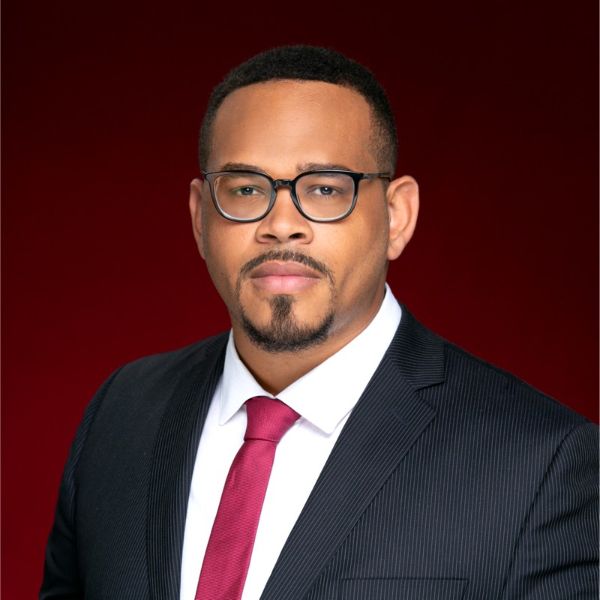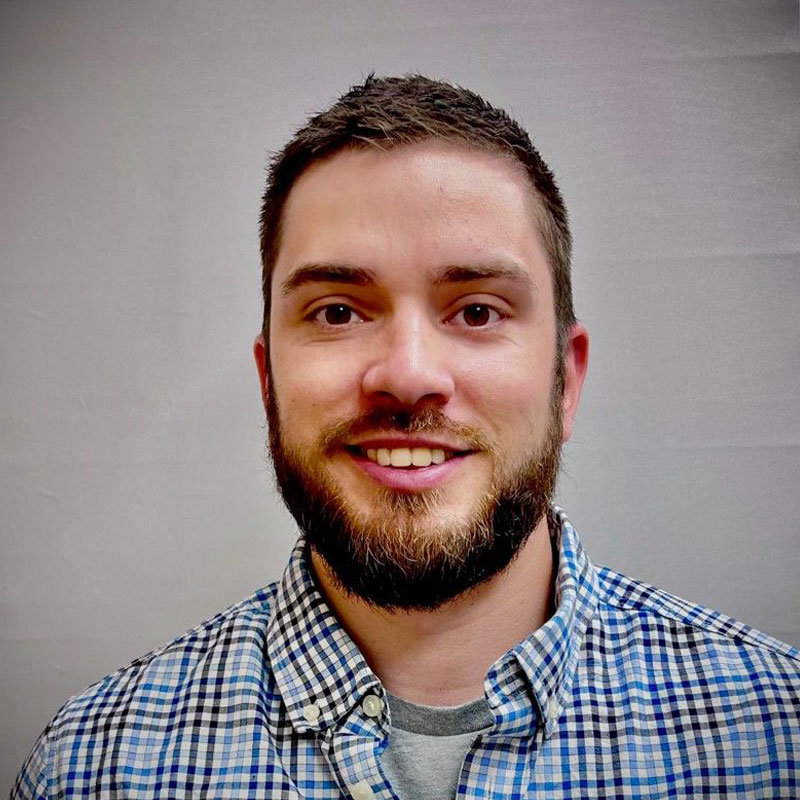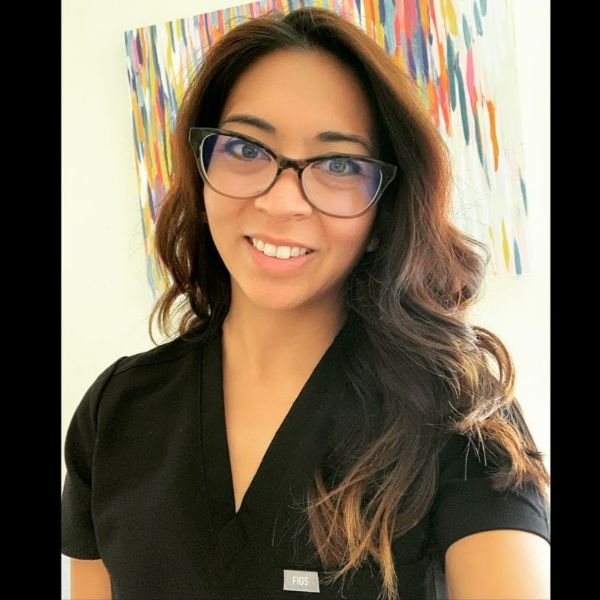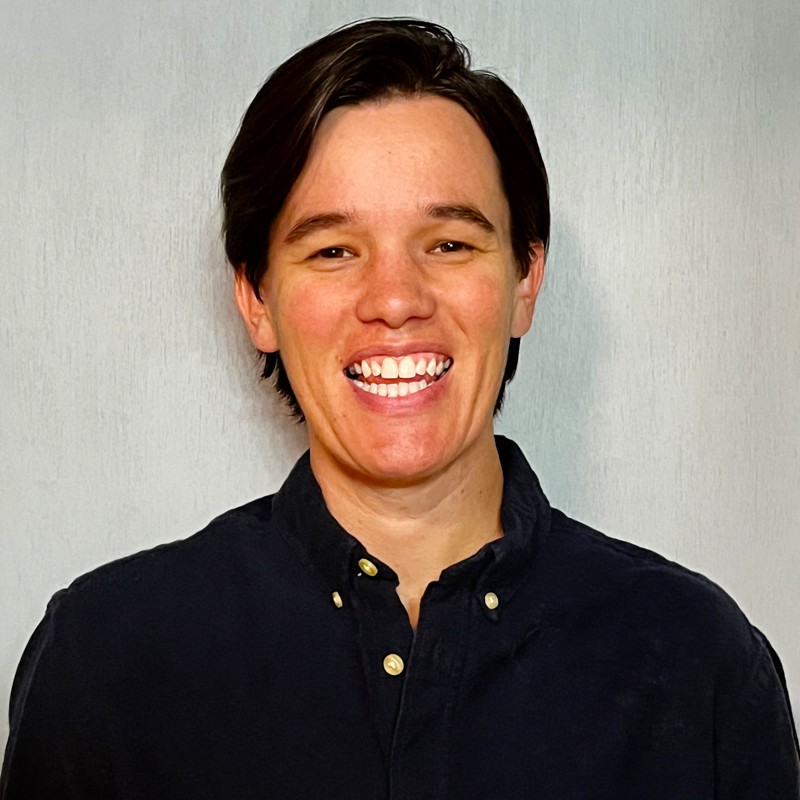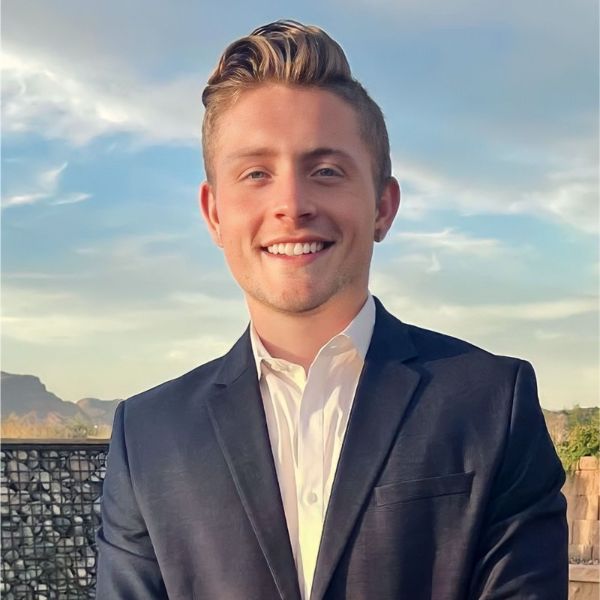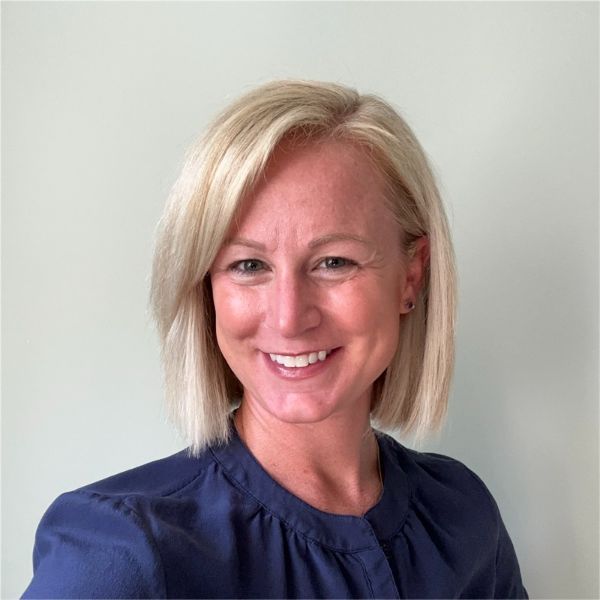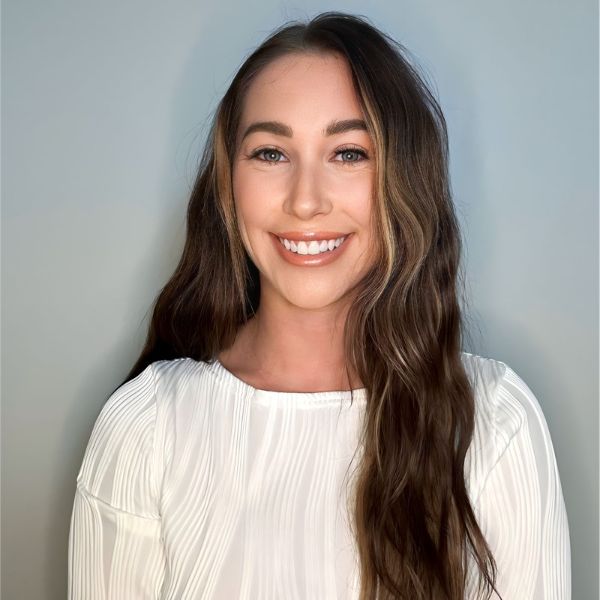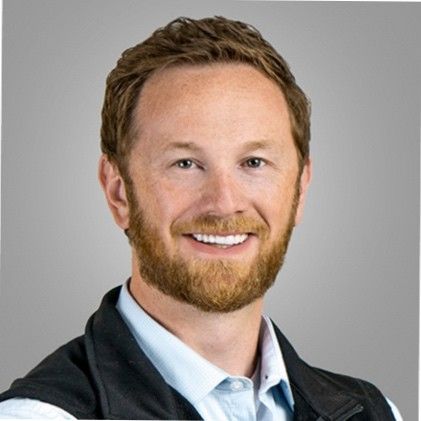
In this second segment of a two-part interview, serial entrepreneur Jeff Smith shares how he found his passion and mission through pharmaceutical sales. He now provides consulting and advisory services to companies using innovation and technologies to solve problems. With the lessons learned from his early ventures, he is set to build a great business with an awesome team, continue innovating, tell the right story to their customers, and leverage social media.
—
Watch the episode here
Listen to the podcast here
Pharma Sales To Med Device CEO: The Jeff Smith Story Part 2
We continue our interview with Jeff Smith. In this second part, we get into the power of social media, what it’s doing for him, what it’s doing for medical sales reps, and why it’s so important. COVID opened things up as far as how it should be utilized and why it should be utilized. Now, it’s taken on a life of its own, and providers are seeing it as a way to share information, which is such a valuable thing because they’re educating their colleagues to live.
Medical sales reps are also seen as a way to be a better resource to their customers. Out of obvious success, we provide those services for both medical sales reps and medical providers. It’s so great to talk with someone that’s in a leadership position that completely understands and sees the value in what’s happening with social media. As always, thank you for tuning in to the show. We do our best to bring you insightful information and new innovations so that you can enhance your career in the medical sales space. I hope you enjoy this interview.
—
I love business and entrepreneurship. Whether it’s clinical, regulatory, business development, finance, or marketing, I get to meet all the people. It was at Kyphon where I did a sales ops job. We bought three companies in the span of a year. The first one was this little business out of Stanford. It was from a great surgeon and founder, Todd Alamin. He developed a discography product, which was awesome. We bought it. We then bought St. Francis Medical Technologies, which was a $700 million acquisition, and another business.
The little discography product wasn’t getting attention, and I wanted to get back to selling and making some money because the family was getting bigger. I got the chance to pitch to the senior leadership. I got the budget to hire a twenty-person direct salesforce. I worked with a guy named David Schumers who was my marketing counterpart. We did this for about a year. It was awesome. The only downside was the product didn’t have reimbursement, and it didn’t work.Right around that time, I had admired the heck out of Art Taylor from afar. We’d get to talk to him here and there. There was this moment where you had to sign a non-compete that you were going to be Medtronic blue for life. I thought maybe I would do it because it’s such a good business, but it was right around that time that Dr. McCormack, who had been my customer that is a spine surgeon in San Francisco, calls me out of the blue and was like, “I want to tell you about an idea.” That became Providence Medical Technology.
What year was this?
It was 2007 and 2008. I didn’t sign the Medtronic Transition Package. It was June of 2008. I wrote a post on this on LinkedIn. We had my third son, Brady, and left my job. We raised $1 million and it was go time. I’ve been doing Providence ever since.
You’re a serial entrepreneur. You have six businesses under your belt. Where in this journey did the other businesses happen? Providence started several years ago, so I’m assuming they all started after Providence. How did you fit that in?
My wife is a Canadian citizen and a US citizen, but she was born in the Philippines. I visited the Philippines in 2005. I had some downtime in Manila, staying at my wife’s family’s house. I got a ride to this hospital and I started pitching to spine surgeons. It turned out there was a surgeon, Dr. Jose Paiso, who had heard about kyphoplasty. He was like, “We would do this all day long.”
I wrote a business plan. I pitched it to my manager at the time, Steve Carmody, who is my Regional Sales Manager. I did a lot of research. I went for it on this plan. He liked it enough to forward it up the chain. In Philadelphia, it was my first North American Spine Society in 2005. I was pitching to the Vice President Richard Heaslip, who is a dear friend. He now works at Google. He worked at Providence for two years.

The offer was 75 million people. They primarily speak English. They don’t have access to the best products. We want exclusive distributorship rights for balloon kyphoplasty. I know this because I have a little more perspective. The Philippines was not a big market on his strategic plan. He was like, “We’ll give it a shot.” I want to be clear on this. Will Steedman and I started this business. He moved from San Francisco to Manila, sight unseen. We began the process of starting a distributorship and we were financing the whole thing. I’m not involved with Pacific Surgical as an operator or even a board member. What Will has done was build the largest medical distributorship in the Philippines. They sell everything. That is Pacific Surgical.
Providence Medical Technology was founded at the same time Thayer Intellectual Property was founded. In the early days of our company, we designed our first implant instrument system. We started a clinical trial in the Philippines. There are some good surgeons there. We had downtime. He had another idea for Carpal Tunnel Release and it was the idea of cutting from the inside out. Carpal tunnel has 500,000 surgeries done in a year. It is a very common problem. Most of it is done through an incision in the palm.
There had been this spike of innovation in the late ‘90s and early 2000s using an endoscope. Despite the very incredible data showing, endoscopic was better for the patient. Unbeknownst to us at the time, there were reimbursement considerations that were stifling its adoption, but Dr. McCormack had this awesome. We developed this thing called the MANOS Carpal Tunnel Release.
We had the same engineers that we worked with at Providence. As consultants, they designed this thing and it was amazing. It would be proximal to the wrist. You’d go underneath the transverse carpal ligament that you were trying to cut, but you would cut it from the inside out and preserve all the tissue in the palm. It is an exquisite innovation. You don’t want to mess with that tissue.
We raised some money for that. It was maybe $4 million, and then we were off to commercialize. I was doing the Kyphon playbook. The problem is, and this is one of the episodes at Unmet Need talking about the unit economics, the total facility reimbursement with the hospital or surgery center for carpal tunnel release is $1,500. You can’t charge $2,000 for your device. The most we could charge is $900.I recruited all these great direct sales reps. You would have to do 100 cases a month to make any money. We had $5 million in sales. We had clinical papers. You can look up MANOS Carpal Tunnel Release. We were on TV and it was awesome. It is an awesome product. We almost sold the business the second year. It had a term sheet and it was going to be great. This was from 2008 to 2014.
It’s around the same time as Providence is going.
I was working out of Dr. McCormack’s. He has a medical building, so we had space. We were always together. He had so many good ideas and I was ready to do anything. By 2014, we were on our way with Providence. Richard Heaslip did well when Kyphon was acquired. He then got recruited to Keystone Dental. He did that for a couple of years. I was at Warburg Pincus, a portfolio company and that was acquired. He was like, “Let’s do this. I’ll be your International Sales Vice President.”
We got a CE mark, and we were selling the DTRAX system in Europe while also building this US salesforce for Thayer. It started getting tight. We were always raising money for both companies. Most of the time, it was the same investors because they were like, “I don’t know which one of these things is going to hit, but these guys seem to be committed.”
In 2014, it was clear that Thayer was going to be hard. We started winding that down, and that was the year we raised our first venture financing. We got a couple of our products FDA cleared and we raised our first venture financing. We wound down Thayer by 2015, but it was at that same moment that a couple of the Providence people and I said, “Why don’t we start an incubator?” Surgeons were always calling saying, “I got an idea,” and we developed this way of scoring the likelihood of success.
[bctt tweet=”It doesn’t matter how well-trained the sales team is or how good the evidence and the economics are. If you can’t get the surgeon’s time, you’re stuck.” via=”no”]
Surgeons would pitch us. We give them this very quantitative assessment of their idea based on market size, the clinical need, and the attractiveness as a physician call point. We would do this reimbursement ASP arbitrage where it’d say, “If you can get this case, reimbursement is $25,000 for the hospital. There’s enough room that if you solve this problem, you can make some money.”
We did two businesses at our company. There were two surgeons, Bradley Jones in Chico, California, and then Sandeep Kunwar on The Peninsula. It was a simple spinal implant. What we saw is there was a change in reimbursement for anterior cervical fusion. The CMS had determined that the use of a standalone cage, meaning no plate, and integrated screw fixation, that surgeons would no longer be able to build this one add-on code.
We developed a product that worked like a standalone but met the code criteria. We made a prototype. Shig Tanaka, who has been running R&D at Providence forever, had come over to work at the Prospect. We ended up selling it to Spine Wave. It was a structured deal. It was a great deal for them. That product is now called Paramount. It was a lesson. We didn’t put much money in. We sold it in a structured deal, meaning you get a little upfront, a little when they’re done, a little with the FDA, and then a piece of the sale for quite some time. We were like, “This is a validation of this model.” What was happening at that time in Providence was we hired a VP of sales. We were hiring reps and had a venture, so we had to go. They expected growth.
Every time we’d hire a rep, we’d go into a market. The rep was ready to sell, but we didn’t have hospital approvals. Everything for our company was like the brake lights of hospital approval. It was right around the time that clinical value analysis was becoming a specialty amongst hospital administrators. It was the discipline of saying, you can’t sell it, “We can’t use everything here, so we have to look at it. Is there a clinical value that you could substantiate through evidence? Do the economics work?”
Every time, it involved a bunch of hospital administrators and busy docs having to sign a bunch of stuff and ultimately show up at some meeting at 6:00 in the morning. I was like, “This can be fixed.” Ed Lou and I were kicking around ideas. I said, “I want to develop a cloud-based software that very efficiently gets all these signatures lined up on all the materials that are part of a clinical value analysis submission that the sales rep is responsible for sending in,” which you never know if it’s the most recent or the right thing.
We created a cloud-based platform for clinical value analysis. In 2015, I met this super sharp guy, Austin Dirk, at a Wilson Sonsini Investor Conference. It was the summer between his 1st and 2nd year at Harvard Business School. We were both waiting in line, trying to get five minutes with the VC that had presented. This guy was younger, smarter, and sharper. He had been a sales rep at St. Jude and then got into Harvard Business School. I was like, “Why don’t you join us? Come work at our company.”
He accepted the job running business development for our company. In the three months from offering to him graduating Harvard Business School, we had become so taken with this idea for the cloud-based platform. On his first day, he showed up at our office and I was like, “What do you think about running this thing? This is what we’re doing.” To his credit, and I can’t say this enough, he thinks he’s joining this incubator. We got way too much going on. He was there with us for 6 to 9 months, and then we made him the CEO. He got all the things that you would imagine a founder would get.
He got this office space at this cool incubator a software company was putting on. To Austin’s credit, he raised money and built a product. Austin has got great instincts. He’s great at selling and raising capital. By then, he had raised money from a fund in Nashville, which was becoming the hub for digital health, particularly anything involving hospitals because that’s the home of HCA. There’s a lot of that work there.
He built it into a business, and I was focused on our company. When he sold that business in 2022, it was an unbelievable accomplishment. All the credit goes to Austin and his team. He and Stephen Saine, who is the technical cofounder, built a great business. In the last couple of years, there had been so much consolidation. Other clinical value analysis platforms emerged and they’re all being acquired. It was the fourth quarter of 2021 when I was catching up with Austin. I was like, “It might be time. We don’t want the music to stop. Everyone that could buy one of these things had bought one. We’re going up against better finance and bigger competitors.” He thought about it and talked to people he respected. He made a decision to get an advisor.

I can’t speak about the acquisition or any of the details. I’m under NDA, but he succeeded in a great outcome that was a life-changing event for anyone involved. Meanwhile, we’re still building our company. We did over $25 million in sales in 2021. We’ll grow 25% again doing the largest prospective randomized control trial in the spine. It gave me perspective, and it’s one of the themes when I try to share my experience with entrepreneurs.
We have been talking to acquirers for two years. I thought for sure we would sell the business. It took me about ten years to realize that my goal was not to sell the business. The goal is to solve the problem and achieve the mission. The more we started to realize that it’s not about how long it takes, we had this amazing platform in the core spinal system. There are 90,000 Americans a year that get a neck fusion that needs more than what the current standard of care provides, or they fail to have a non-union.
At that point, our company had raised about $50 million in the venture. We had everything you could need to build a business. We had great people and supportive investors. That’s when I realized, “I’m going to put my head down and build a great business that has high sales growth, great gross margins, is profitable, has an awesome salesforce, and is good at clinical trials that create evidence to get the right FDA labeling so that you can tell the right story to the customer.”
I’m going to bring it back to this great business you’re building. The problem was that I lived as a pharmaceutical sales representative where the whole primary care market had been inundated and overrun with reps. That is what has happened now in med tech. Where our paths crossed is we were looking at our senior vice president of global sales, Jeremy Laynor. He had an unbelievably successful sales leadership career. He built high-performance teams and wrote a great book called The Point Guard Approach, which is available anywhere you can buy books online. Get your copy. It will change your life. It’s a great book.
I respect Jeremy. Jeremy is a guy that has had a very successful career and he is still a young guy. He is doing the direct sales model, distributors, and field visits. It was a lot of the same stuff we learned at Kyphon. He worked at Cardinal Health for a minute too. What Jeremy realized before me is that it doesn’t matter how well-trained the sales team is. It doesn’t matter how good the evidence is. If you can’t get some of the surgeon’s time, that last mile of delivering the transformation of healthcare is stuck.
I had seen Matthew Ray Scott of the FEED agency. I had seen the stuff on LinkedIn during the pandemic. This was 2020. I started reading what he was saying. LinkedIn, like every other social network, is the moment where you can build an audience. That’s when I became intrigued by content creation. I didn’t know enough yet to deliver value. I was just experimenting during 2020. I’d share something that was occurring to me. Most of the time, it would form. Sometimes, people liked it. I said to Jeremy, “This is the future of selling.”
This year at our global sales meeting in January 2022, I saw your smiling face, and I was tired. It was day three. I was sitting there with Dr. McCormack, and when I heard the statistics that you presented about how people want to make purchasing decisions or the way they want to interact with industry and evaluate whether or not to buy something was increasingly done online. This is on the heels of two years of sheltering in place and not being able to apply. I was like, “This is it.”
When Evolve Your Success agreed to train our direct salesforce, I saw all our sales reps. The ones that were more media-savvy used LinkedIn to share with the community what they knew, deliver value, and then in a very targeted, non-intrusive way, interact with the content that their target surgeons. I was like, “This is the future.” I believe it. I don’t believe we’ll be doing door-to-door sales for much longer. There will always be, in my opinion, a sales representative who is supporting the surgeon in the case.
That’s never going to go away.
[bctt tweet=”While everyone’s doing the old playbook for a little while, there’s an opportunity to be different.” via=”no”]
It may be done virtually, through augmented reality or an avatar. We’re human beings and social species. The personal relationship is always going to be there. If you get a good medical device and sales representative, there are 21 selling days in an average month. You can’t get in front of that many surgeons. They don’t want to do lunches and dinners. Cadaver labs have become very hard to fill, so while everyone’s doing the old playbook, for a little while, there’s an opportunity to be different. That’s what I saw in your presentation. That’s why I asked you to coach me on this personally, so thank you.
That’s what we’re about. What’s so cool about what you’re talking about is it’s being led by the surgeons. They’ve realized that these social media platforms are giving us a voice and allowing us to develop opinions and spread the knowledge to other surgeons, and even invite patients to a whole new world that that medium was not there. No thanks, but COVID created the need for it. It grew it. Now, it seems like the sensible way to go that all these medical sales reps can get on the heels of and create brands for themselves.
As a company that’s our company’s size, at some point, you stop financing the business venture capital and you can take the business as public to access the capital markets. We were pretty far into those talks and 2021 was the most med-tech IPO in history. The bankers are salespeople like us. The way they build relationships is they travel four days a week. They go to all the conferences. The traditional IPO roadshow was New York, Boston, San Francisco, Chicago, San Diego, and maybe London. Little businesses that lost money would charter a plane because you had to hit all this in a short window.
All the IPOs that happened were on Zoom. It was Zoom roadshows or virtual video roadshows. I don’t think investment banking will go back to the old way of doing it. Wall Street has been around a long time and there have been big behavioral shifts in the business model. That’s when I started realizing, “This is coming.” I’d written this grant proposal called Remote Med Rep. You would have one good technical sales rep that could be air traffic. You could cover six cases at once using video. A number of companies are doing that. It was one of those things where everything was converging.
Digital surgery has a push behind. One of my dear mentors, the late Fletcher Eyster, the neurosurgeon who passed away a couple of years ago, used to say, “In medicine, innovation happens one funeral at a time.” The joke is that it’s a specialty like medicine where the training is based on its precedent base. This is how your mentor taught you to do it. You teach other people. To break that cycle and ask somebody who has been training for 15 years and you’re in your 30s when you start practicing to think about it differently is hard. That’s the fun part about healthcare innovation.
There’s so much inertia behind keeping it the same way that if you have a technology that can fundamentally improve the standard of care, that’s a start. Usually, the biggest successes coincide with a behavioral shift in the marketplace, and they’re enabled by exponential technology. Something like Cloud is what enabled GreenLight, or mobile, which enabled all the Uber-type stuff. That’s what I quickly realized. I picked eCommerce with Jamie. We were right and early, so we failed.
All the apps that have these mass evaluations, like Door Dash, were only possible because of ubiquitous mobile broadband in everyone’s pocket. Four billion people in the world have a smartphone, Wi-Fi, mobile internet, and then a supercomputer in their pocket that five big companies are making a better version of every year. The superpower you’re building on is getting bigger and better without your own investment. I was like, “That’s the future.”
Your company is growing. You’re seeing it happen right before your eyes. What’s next on the books for you? What’s your next venture?
At our company, we’re going to accomplish this mission. Circumferential is going to be the standard of care. I would expect in the next year or two that we will scale up even more. We will have to continue to execute a lot of that. We’re doing this large clinical trial, the FUSE Study. We are up to 30 quota-carrying direct reps and sales managers. The likely fork in the road in the next year or two will be a public company, a big balance sheet, or a strategic partner gets acquired. If we go public and build it to $100 million to $200 million in sales, usually, there’s consolidation at the end. That’s the most likely outcome for our company, whether it’s 2022 or in 5 years. I’m having so much fun and still learning that they both work for me.

What gets me the most excited is when I see the physician entrepreneur who has a prepared mind to see the problems at every juncture in the patient care experience. When a physician entrepreneur approaches me, which happens a lot, fortunately, what I would like to be able to do is help that potential cofounder take a lot of the guesswork out of the ABCs of starting a healthcare business and making introductions to the service providers that know exactly what to do.I do some Angel investing. It’s just a handful of companies. They tend to be more towards software. The commercial model is more efficient. What I love to be able to do long-term is anytime physician entrepreneurs are thinking about starting a business, they think of us. I hope I’ll build their trust by sharing everything I know for free to build an audience because it goes back to access and this constraint of that last mile to get in front of the most important stakeholder other than the patient, which is the physician.
My hope is I’ll have more time to look at these ideas, contribute, and give advice, but ultimately, I’d like to invest more than I can out of my personal assets with my wife and probably raise a fund. The big funding gap in med tech is in the seed stage or the early stage. There’s a ton of capital for commercial-stage companies with FDA clearance, data, and patents, but there’s this chasm of doom where I’d love to be the first to check-in. The early-stage venture has huge returns when it goes well, but also, it is the hardest to pick.
For me, my why is inspiring growth so that we can transform healthcare together. I love being an operator and running businesses. There’s so much to learn as a leader. It’s probably the curiosity that I have. I like being involved in a bunch of different things. That would be fun for me. I would also love to help physician entrepreneurs build great businesses that change lives and do that less as a full-time employee but more as maybe an advisor, board member, or coach, and then getting a chance to invest in these things and see them along.
That is a dream right there. I like it. You’ve probably made so many people happy that have ideas with what you’re sharing. Remember, we have people that are trying to get into the industry. We have sales reps, sales leaders, and also people that have ideas that would love to be a part of some of the things you’re talking about and, hopefully, one day be funded by you. What’s the last message you want to share with the audience?
The first is if you’re involved in sales, marketing, finance, or whatever you do to make your living, that’s great. You’ve developed a skill and you’re compensated for it. First of all, value that. Sharpen it. Honor it. Don’t ever dismiss it as, “I’m just sales, finance, or marketing,” because that is the thing that you do uniquely well that others don’t. However, be curious. Always ask the question why. The whole first principle exercise is if you say the current state of affairs is this, what would it be like if it was better? Why is it this way? Then, say, “It’s that way because of insurance companies.” Why is it like that? Why did insurance companies become this way? By continually asking the why, you get back to the first principles and the problems. It requires curiosity.
My parting message would be to be the best that you can be at whatever it is that you do. I made this mistake. Don’t always be trying to get to the next job, but from whatever perch you sit in the healthcare system, don’t be myopic. Open up your view. Look for the problems and be curious. This is advice I was given a lot when I was a kid. If there’s something that you want to do, look for the most successful person or people that do the thing that you think you want to do and model everything they did.
If you look at the founder stories and entrepreneurs, there are so many patterns. Should you decide to start a business or even contemplate it, go to JeffSmith.co. That’s my website. You can also hit me up on LinkedIn. Tell me you want to talk for a few minutes, and I’ll tell you what I think. It’s just one perspective. Let’s build a relationship and I’ll follow your progress. If I’m not in a place where I can be the first investor and I think what you’re doing matters and I’m interested, I’ll try to make introductions.
It doesn’t get better than that. Thank you so much for the time.I appreciate it. I enjoyed being a guest.
—
That was part two with Jeff Smith. It’s so refreshing again to talk to someone in such a high leadership position that clearly sees the value of social media and what it’s doing for medicine, not just amongst the providers of medicine but amongst the supporters of medicine, like medical sales reps. I was so glad to have him as a guest.
[bctt tweet=”If there’s something that you want to do, look for the most successful people that do the thing that you think you want to do, and model everything they did.” via=”no”]
You might be out there and you might be someone that’s a sales rep. You’re thinking to yourself, “I love what I read and I’ve always seen the value. In fact, I spend time on LinkedIn. I see things and I see my colleagues posting things sometimes. I see some posts get traction, and I see others that don’t. I wonder how it all works. One day, I’d like to try to do this, but it’s not for me because I have no idea how to make that happen.” If that’s you, you need to go to EvolveYourSuccess.com. Visit Improve Sales Performance and select our LinkedIn program. Have a conversation with us and let’s see if we can turn you into a thought leader within your department on the LinkedIn platform so that you can be a better resource to your customers.
For those of you that are trying to get into the industry, you’ve noticed me say it once or twice. This is our 92nd episode, so you’ve probably noticed I’ve said it 92 times. If you tune in to every one of our episodes and you’re looking to get into the medical sales industry, you’re ready to make that career change. Maybe you don’t have sales experience or any medical experience, and you’re thinking to yourself, “There’s no way I can be in this field, but I’m so interested to learn all the things I can,” then you need to stop wondering or thinking you can’t and do something to ensure that you do. That’s by visiting EvolveYourSucces.com. Select Attain A Medical Sales Role, fill out our application, and then have a conversation. Let us help you get to where you want to be.
Lastly, if you’re a sales rep and you want to make 2022 your year, maybe you read this episode and you’re thinking, “I get pretty good access to my customers, but I know it can be improved. Many of them are so hard to reach. I’ve heard about social media helping, but I don’t know how it works,” then you need to go visit EvolveYourSuccess.com. Select Improve Sales Performance and choose a program. We have a LinkedIn program and a sales improvement program. Either one is going to help you use social media to be a better resource. As always, we do our best to bring you guests that bring insightful information that bring innovations. Not only that, but we do everything we can to share insightful information on this show, and we will continue. Thank you for tuning in to the show. You will be hearing from me soon.
Important Links
- Jeff Smith
- The Point Guard Approach
- LinkedIn – Jeff Smith
- Dr. Bruce McCormack
- Attain A Medical Sales Role – Evolve Your Success
- Improve Sales Performance – Evolve Your Success
About Jeff Smith
 I am a serial entrepreneur who loves building products, teams, and companies that improve human health. I have founded 6 companies with 2 exits to date. I am currently CEO of Providence Medical Technology, a commercial stage medical device business I founded with over $20mm in annual revenue and more than $60mm in capital raised. I am fascinated by the societal impact of innovation waves and seek opportunities to apply these forces to large under-served global markets.
I am a serial entrepreneur who loves building products, teams, and companies that improve human health. I have founded 6 companies with 2 exits to date. I am currently CEO of Providence Medical Technology, a commercial stage medical device business I founded with over $20mm in annual revenue and more than $60mm in capital raised. I am fascinated by the societal impact of innovation waves and seek opportunities to apply these forces to large under-served global markets.
Love the show? Subscribe, rate, review, and share!
Join the Medical Sales Podcast Community today:











